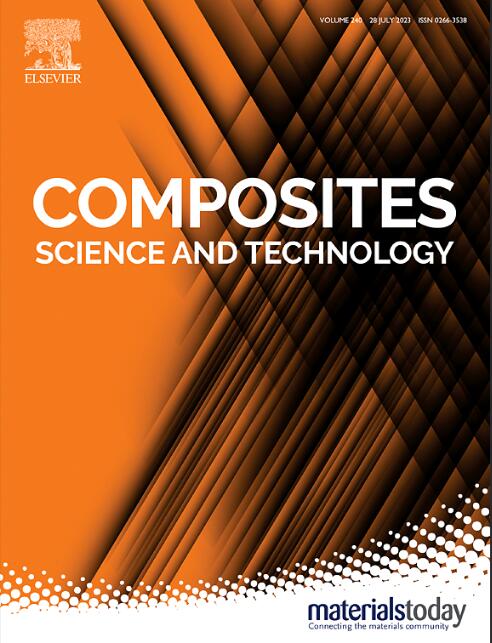Unravelling the role of inter CNT yarn–yarn interactions in governing the failure behavior in a unidirectional CNT yarn-reinforced plastic composite
IF 8.3
1区 材料科学
Q1 MATERIALS SCIENCE, COMPOSITES
引用次数: 0
Abstract
Recent rapid advancements related to enhancing the material properties of carbon nanotube (CNT) yarns, which are composed of twisted nanoscale CNTs, have opened new possibilities for their application as reinforcing agents in composite materials. In this study, the failure behaviors of CNT yarns were examined in a polymer matrix environment under tensile loading using synchrotron radiation X-ray computed tomography (CT) and polarized light microscopy. Double-yarn fragmentation specimens, composed of two closely positioned CNT yarns embedded in parallel, were employed to examine the failure interactions between the CNT yarns. X-ray CT observations revealed that the fracture surfaces of the CNT yarns exhibited a high degree of irregularity, with cracks propagating into the surrounding matrix and some extending into the yarn bodies, thereby suggesting that the failure of CNT yarns involves both breakage and slippage of the CNTs. The investigation of yarn–yarn failure interactions revealed that ∼70 % of the fractures observed in the CNT yarns occurred as coordinated fractures, which was clearly higher than the ∼20 % observed without such interactions. This finding demonstrates that the failure behaviors of CNT yarns in the polymer matrix environment are governed by yarn–yarn interactions rather than by the statistical strength distributions of the yarns. These results provide valuable insights for researchers in the field of composite materials, ultimately promoting further advancements in the development of strength prediction models based on the actual failure behaviors of CNT yarns in the polymer matrix environment.

揭示了碳纳米管纱线与纱线之间的相互作用在控制单向碳纳米管纱线-增强塑料复合材料失效行为中的作用
碳纳米管(CNT)是由纳米级碳纳米管缠绕而成,近年来在提高其材料性能方面取得了快速进展,为其作为增强剂在复合材料中的应用开辟了新的可能性。在这项研究中,使用同步辐射x射线计算机断层扫描(CT)和偏振光显微镜研究了碳纳米管纱线在拉伸载荷下的聚合物基质环境中的破坏行为。采用两根位置紧密平行嵌套的碳纳米管纱线组成的双纱断裂试样,研究了碳纳米管纱线之间的断裂相互作用。x射线CT观察发现,CNTs纱线的断裂面表现出高度的不规则性,裂纹向周围基体扩展,部分裂纹向纱体延伸,说明CNTs纱线的失效既有CNTs的断裂,也有CNTs的滑移。纱线-纱线失效相互作用的研究表明,在碳纳米管纱线中观察到的断裂中,约70%发生了协调断裂,这明显高于没有这种相互作用的约20%。这一发现表明,碳纳米管纱线在聚合物基体环境中的失效行为是由纱线-纱线相互作用而不是由纱线的统计强度分布决定的。这些结果为复合材料领域的研究人员提供了有价值的见解,最终促进了基于碳纳米管纱线在聚合物基体环境中实际破坏行为的强度预测模型的进一步发展。
本文章由计算机程序翻译,如有差异,请以英文原文为准。
求助全文
约1分钟内获得全文
求助全文
来源期刊

Composites Science and Technology
工程技术-材料科学:复合
CiteScore
16.20
自引率
9.90%
发文量
611
审稿时长
33 days
期刊介绍:
Composites Science and Technology publishes refereed original articles on the fundamental and applied science of engineering composites. The focus of this journal is on polymeric matrix composites with reinforcements/fillers ranging from nano- to macro-scale. CSTE encourages manuscripts reporting unique, innovative contributions to the physics, chemistry, materials science and applied mechanics aspects of advanced composites.
Besides traditional fiber reinforced composites, novel composites with significant potential for engineering applications are encouraged.
 求助内容:
求助内容: 应助结果提醒方式:
应助结果提醒方式:


